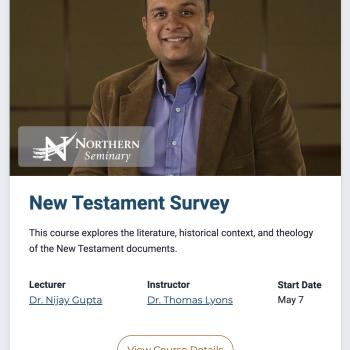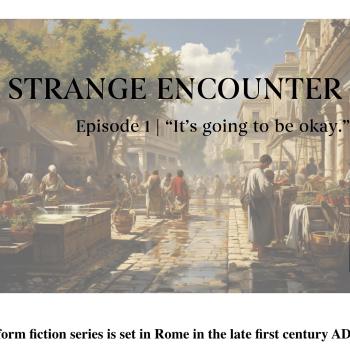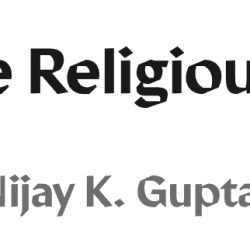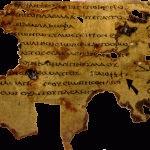When I teach a course in NT, I see my responsibility as three fold:
(1) Teach CONTENT – for a course on Romans, I want the students to know what is in Romans, of course.
(2) METHOD – It is not just about the WHAT?, but also HOW? One of the most important things that Seminary does for students (as it did for me), is teach good hermeneutics – how do we know how to study the text, and derive meaning from it?
(3) RESOURCES – Students eventually leave seminary (most of them!) and then are left to the Barnes and Nobles and libraries of the world to further their education in terms of reading books. How can you separate good books and articles from flawed and “unlearned” ones? I hope students learn which resources to go to first when they are in ministry or wanting to read up for whatever reason.
When it comes to METHOD, I try to offer some easy-to-understand teaching tool that can be brought to mind when studying a subject. For my 2 courses on the Fourth Gospel this summer, I have devised (tentatively) an acronym for how to study any passage in John and discern its “MYSTERIES.” (Note: I use the word “MYSTERIES” as the acronym).
M = Misunderstand/double-meaning/irony (EPISTEMOLOGY) – Note wherever you can when there are two ways a word or idea (or phrase) can be taken. This involves epistemology – do you have ears to hear? Are you getting the sub-text? Those who are of the world above can see the light – they “get” what is going on. Clearly the narrator does. Clearly most characters are confused. Where are you?
Y = Yahweh revealed in Jesus (THEOLOGY). As the ending of the Gospel attests, GJohn is about belief in Jesus as the Messiah, the Son of God. But John interprets this in such a way that we are meant to identify Jesus with the presence and work of Yahweh himself. Do you see such a connection in the text?
S = Signs that point to the identity of Jesus (CHRISTOLOGY). While only two signs are numbered, and only seven are made explicit, Jesus does many things that could be called “signs,” because they direct attention to the person of Jesus – his power, love, and origin. Do you see them as “signs”?
T = Testimony/truth/witness (CHRISTOLOGY and EPISTEMOLOGY). This is similar to the Signs noted above, but focused on GJohn as a trial from beginning to end. Not only are there “signs,” but in a trial in particular, the question is not about identity, but about truth. To determine the “truth,” you need evidence – especially witnesses who give testimony. When characters act and speak on Christ’s behalf (or when he confesses something), can you discern the truth? How strong is the witness? Who is against it? Is Jesus given a fair trial? Who are the plaintiffs?
E = Escalator (COSMOLOGY). OK, I admit the “E” element is weak insofar as “escalator” is not very descriptive. By this, I mean that John works with two worlds – one above (heaven) and one below (the “world”). Jesus is the man from heaven who has come down (on the escalator). But his goal is to raise others “up” (hence the term “escalate” within the word). Can you sense when people are thinking and acting on the “lower” level? Where does Jesus fit? How is it ironic that he is referring sometimes to being “raised up”?
R = Resurrection life in Jesus (ESCHATOLOGY and SOTERIOLOGY). Jesus confesses that he IS the resurrection and the life. He gives life. He is life. He is not just “life,” but the “life of the new age,” as it were. Eternal life. And he happily passes it on (in a proleptic way) to others. Do you see that in the text? Or do you see death?
I = “I believe” (AMARTIOLOGY and SOTERIOLOGY). Sin and salvation are conceived of in GJohn relationally – those who are “saved” are those who believe in Jesus. The great “sin” of the world is lack of faith in Jesus. Do you understand this and see it in the text?
E = Everybody is important (ECCLESOLOGY and COSMOLOGY). Not only Jews, but non-Jews. Not only the well and clean, but the sick and unclean. Not only the living, but also the dead. God’s hands are open wide and he welcomes all, not just the privileged few. Also, he seeks to include everybody, working as one, in his incarnational ministry – but they must be disciples.
S = Scriptures (Graphiology?). Scriptural references, allusions, and symbols are peppered generously throughout GJohn and clarify, complicate, and fill out the message of the Gospel. What do you learn about the past and the present time from these citations and echoes? What about Jesus? What about salvation and belief? Is God doing a new thing or something he has promised all along?
NOTE: What do you think (blog readers) about this? Is anything inaccurate? Are there gaping holes? Keep in mind, I am working with the constraint of using an acronym! But I am willing to tweak as is appropriate!











